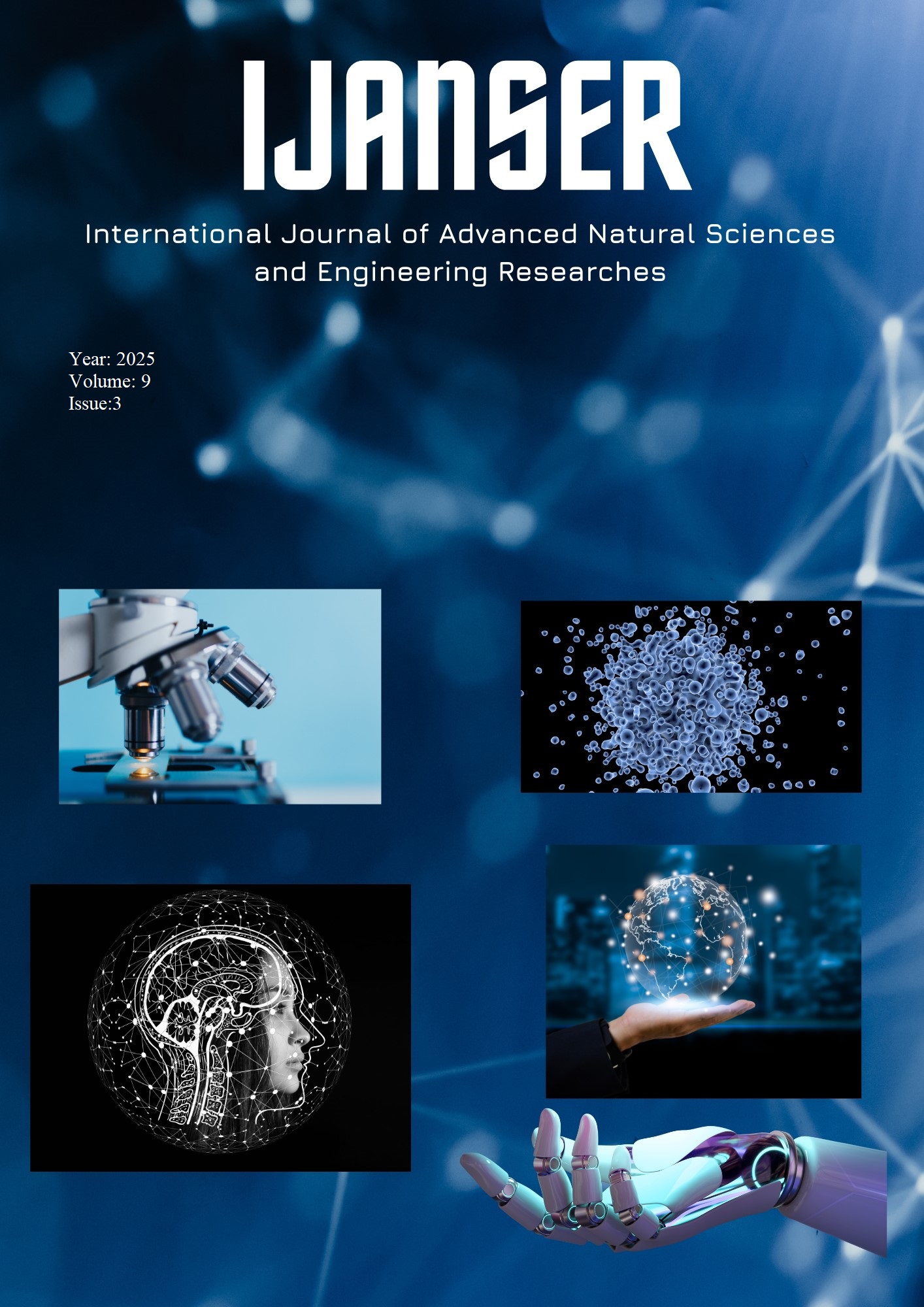Preparation of silica nanoparticles coated with fluorescent nanomaterials (imidazole) for pesticide detection in aqueous solutions
DOI:
https://doi.org/10.5281/zenodo.14957407Keywords:
Fluorescent Nanomaterials, Quenching, Imidazole, PesticidesAbstract
Silica quantum dots are a preferred type of fluorescent materials and are highly appreciated due
to their exceptional properties and size. The study is summarized in several parts In the preparation of
fluorescent quantum dots by the reaction of ascorbic acid with Aptes (3-aminopropyl) triethoxy silane
(SIQDs). Then, the surface modification of SIQDs with a fluorescence-enhancing substance (amidazole)
becomes SIQDs-M. A simple alkaline hydrothermal process was used to synthesize and modify the
surface of silica quantum dots using imidazole to enhance the fluorescence emission and thus improve the
detection limit ratio. The structural information of the prepared silica for the two compounds SIQDs) 3
and (SIQDs-M) was obtained by XRD and then characterized by (FE-SEM), as well as TEM) and (FT
IR). The results also showed that the prepared silica quantum dots have a consistent size distribution
ranging from (12-20) nm, in addition to the optical properties, including a tenfold increase in fluorescence
intensity. The limit of quantitation (LOQ) and limit of detection (LOD) of the identified compounds were
determined using fluorescence spectroscopy at room temperature, and the results confirm that these
values are important in the use of fluorescence spectroscopy and have the necessary selectivity for
environmental applications and can effectively detect the pesticide (boric acid) in aqueous samples. The
optimum factors for the pesticide detection process (mixing time of solutions, concentration, pH effect
and ions) were studied, which proved the effectiveness of the prepared quantum dots in detecting the
pesticide.
Downloads
References
Z. Bisadi et al., “Silicon nanocrystals for nonlinear optics and secure communications,” Phys. status solidi, vol. 212, no. 12, pp. 2659–2671, 2015.
Y. Chen, L. Sun, F. Liao, Q. Dang, and M. Shao, “Fluorescent-stable and water-soluble two-component-modified silicon quantum dots and their application for bioimaging,” J. Lumin., vol. 215, p. 116644, 2019.
K.-Y. Cheng, R. Anthony, U. R. Kortshagen, and R. J. Holmes, “High-efficiency silicon nanocrystal light-emitting devices,” Nano Lett., vol. 11, no. 5, pp. 1952–1956, 2011.
X. Cheng and B. Guan, “Optical biosensing and bioimaging with porous silicon and silicon quantum dots (Invited Review),” Prog. Electromagn. Res., vol. 160, pp. 103–121, 2017.
X. Cheng, R. Gondosiswanto, S. Ciampi, P. J. Reece, and J. J. Gooding, “One-pot synthesis of colloidal silicon quantum dots and surface functionalization via thiol–ene click chemistry,” Chem. Commun., vol. 48, no. 97, pp. 11874–11876, 2012.
M. Dasog, J. Kehrle, B. Rieger, and J. G. C. Veinot, “Silicon nanocrystals and silicon‐polymer hybrids: synthesis, surface engineering, and applications,” Angew. Chemie Int. Ed., vol. 55, no. 7, pp. 2322–2339, 2016.
S. M. Stavis, J. A. Fagan, M. Stopa, and J. A. Liddle, “Nanoparticle manufacturing–heterogeneity through processes to products,” ACS Appl. Nano Mater., vol. 1, no. 9, pp. 4358–4385, 2018.
S. L. Brown, J. B. Miller, R. J. Anthony, U. R. Kortshagen, A. Kryjevski, and E. K. Hobbie, “Abrupt size partitioning of multimodal photoluminescence relaxation in monodisperse silicon nanocrystals,” ACS Nano, vol. 11, no. 2, pp. 1597–1603, 2017.
T. K. Purkait et al., “Alkoxy-terminated si surfaces: a new reactive platform for the functionalization and derivatization of silicon quantum dots,” J. Am. Chem. Soc., vol. 138, no. 22, pp. 7114–7120, 2016.
T. C. Sparks, “Insecticide mixtures—uses, benefits and considerations,” Pest Manag. Sci., 2024.
Y. Zhang et al., “Physicochemical property guidelines for modern agrochemicals,” Pest Manag. Sci., vol. 74, no. 9, pp. 1979–1991, 2018.
M. Kumar, R. Ranjan, M. P. Sinha, and B. S. Raipat, “Different techniques utilized for characterization of metallic nanoparticles synthesized using biological agents: A review.,” Balneo PRM Res. J., vol. 14, no. 1, 2023.
M. Abdelhameed, S. Aly, P. Maity, E. Manni, O. F. Mohammed, and P. A. Charpentier, “Impact of the chemical nature and position of spacers on controlling the optical properties of silicon quantum dots,” Phys. Chem. Chem. Phys., vol. 21, no. 31, pp. 17096–17108, 2019.





